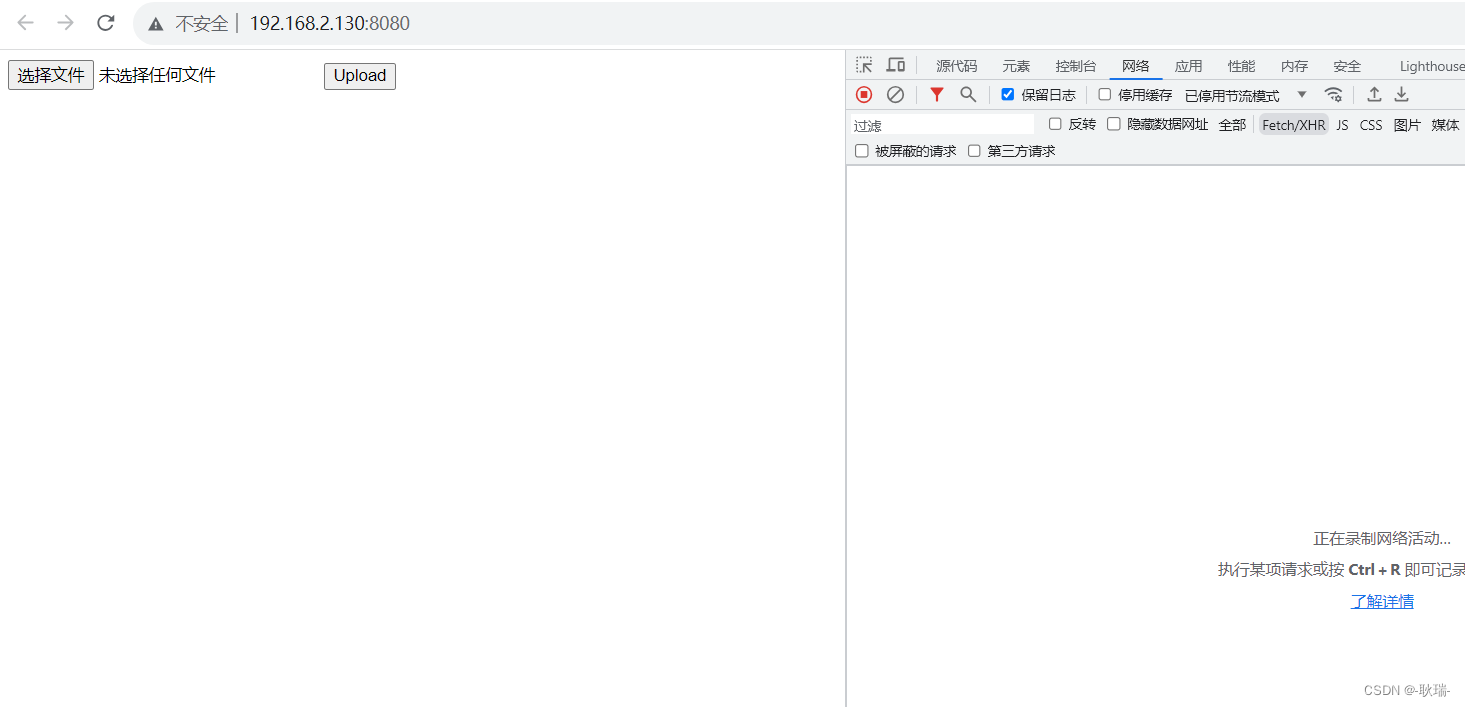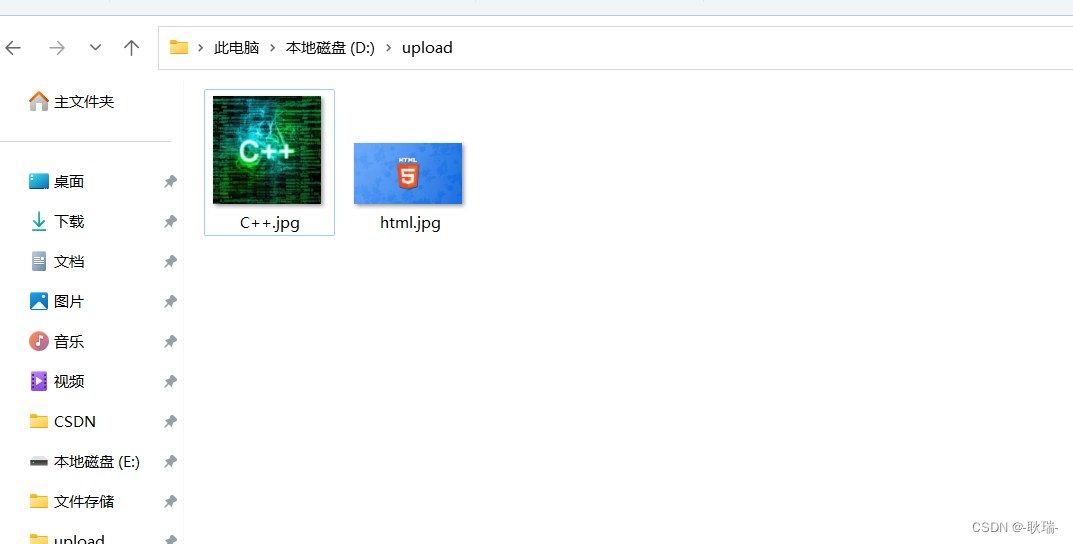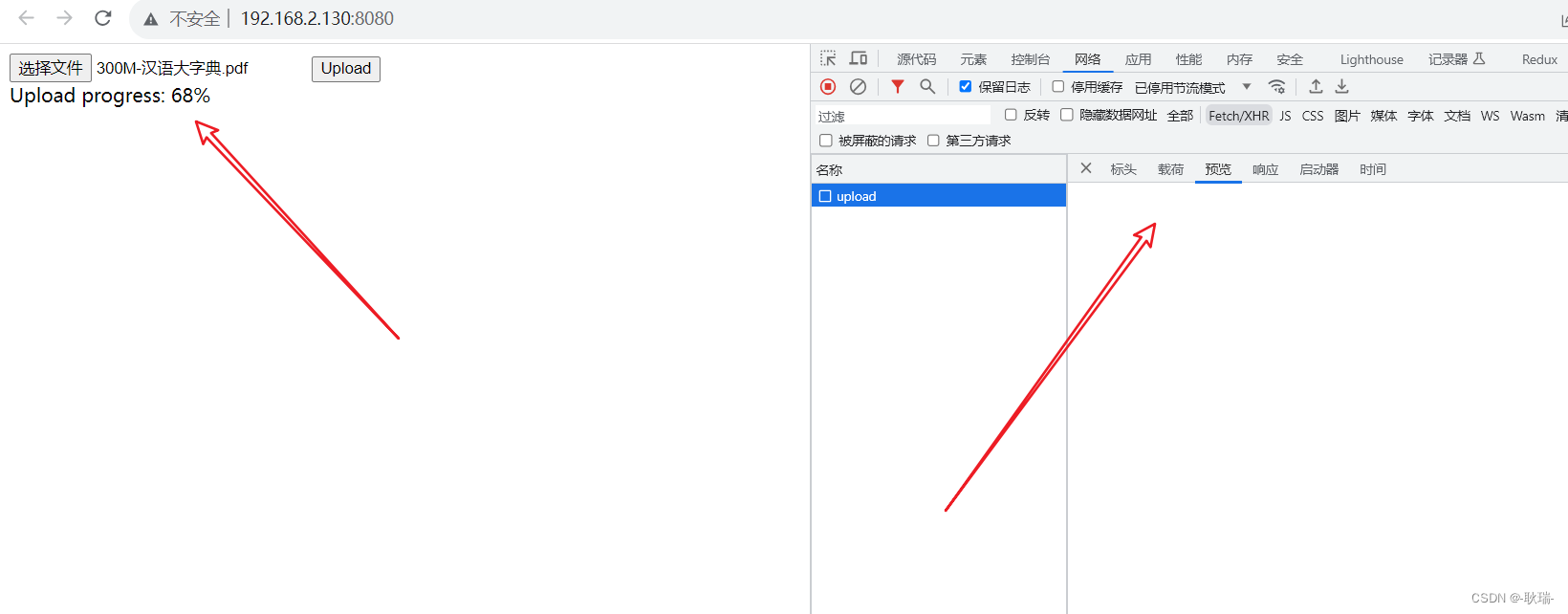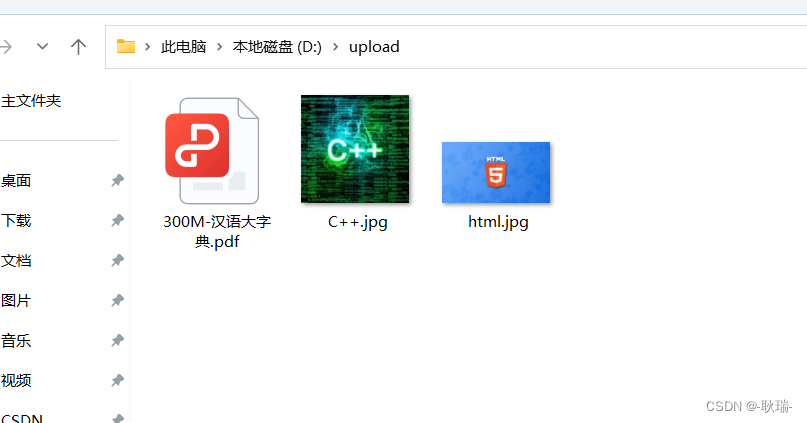之前我们文章 手把手带大家实现 vue2+Spring Boot2.7 文件上传功能 将了上传文件
但如果文件很大 就不太好处理了 按正常情况甚至因为超量而报错
这里 我弄了个足够大的文件

我们先搭建 Spring Boot2.7 环境
首先 application.yml 代码编写如下
server:
port: 80
upload:
path: D:/upload/
spring:
servlet:
multipart:
max-file-size: 500MB
max-request-size: 500MB
这里 我们改了他对请求大小的限制 不然 你上次300M左右的东西 系统直接抛异常了
然后 我们将FileUploadController 类代码更改如下
package com.example.javadom.controller;
import org.springframework.beans.factory.annotation.Value;
import org.springframework.http.HttpStatus;
import org.springframework.http.ResponseEntity;
import org.springframework.web.bind.annotation.PostMapping;
import org.springframework.web.bind.annotation.RequestParam;
import org.springframework.web.bind.annotation.RestController;
import org.springframework.web.multipart.MultipartFile;
import java.io.File;
import java.io.IOException;
@RestController
public class FileUploadController {
//读取配置文件中的 upload下的path
@Value("${upload.path}")
private String uploadPath;
@PostMapping("/upload")
public ResponseEntity<String> uploadFile(@RequestParam("file") MultipartFile file) {
// 处理上传逻辑,可以根据需要保存文件到指定目录
// 这里假设保存到D:/upload/目录下
try {
String filePath = uploadPath + file.getOriginalFilename();
file.transferTo(new File(filePath));
// 进行后续处理,比如返回成功消息给前端
return ResponseEntity.ok("File uploaded successfully");
} catch (IOException e) {
e.printStackTrace();
// 发生错误时,返回错误消息给前端
return ResponseEntity.status(HttpStatus.INTERNAL_SERVER_ERROR).body("Failed to upload file");
}
}
}
然后 我们vue代码 将 App.vue改成这样
<template>
<div>
<input type="file" @change="onFileChange" />
<button @click="uploadFile">Upload</button>
<div v-if="uploadProgress !== null">
Upload progress: {
{
uploadProgress }}%
</div>
</div>
</template>
<script>
import axios from 'axios';
export default {
data() {
return {
file: null,
uploadProgress: null,
};
},
methods: {
onFileChange(event) {
this.file = event.target.files[0];
},
uploadFile() {
const formData = new FormData();
formData.append('file', this.file);
axios
.post('/upload', formData, {
headers: {
'Content-Type': 'multipart/form-data',
},
onUploadProgress: (progressEvent) => {
this.uploadProgress = Math.round(
(progressEvent.loaded / progressEvent.total) * 100
);
},
})
.then((response) => {
console.log('Upload successful',response);
})
.catch((error) => {
console.error('Upload failed', error);
});
},
},
};
</script>
然后 我们将项目运行起来
这是我们的vue界面

然后 我们看到 D盘下的upload

还是只有上文的两个图片
然后 我们点击页面中的 选择文件

将我们的大文件放进来

然后我们点击 Upload
我们可以看到 请求还没返回前 onUploadProgress 就在跑了
axios的onUploadProgress 是一个专门用来监听文件上传的事件 有兴趣可以自己去了解一下

文件上传完 进度就会100 请求也返回了

我们看看文件夹

我们打开文件看一下

也是没有任何问题